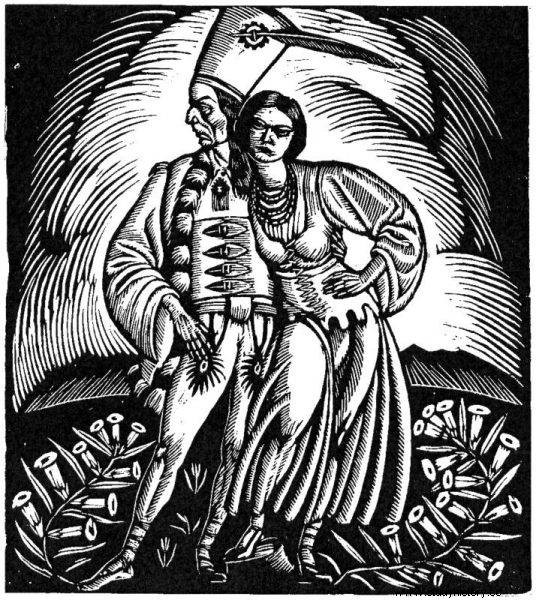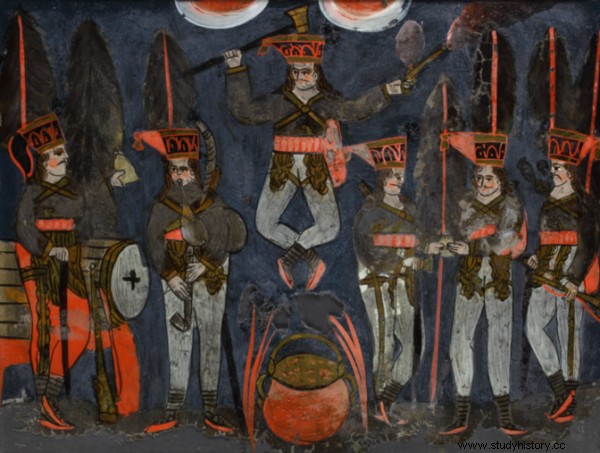He robbed the rich and gave to the poor - this is what the legend says. Juraj Janosik really lived in the Carpathians, but was his life as the stories show it?
Juraj Janosik (or rather:Jánošík) is an important figure in culture - although definitely more in Slovakia than in Poland. We associate the famous highlander mainly with Robin Hood jumping on the Tatra rocks. Meanwhile, on the Slovak side, he was a very important element in shaping the national identity. How from a robber became a national hero? And how much truth is there in the romantic legends about him?
Robber, not an ordinary robber
Janosik was born on January 25 or February 25, 1688 in the village of Terchová (in northern Slovakia). The Slovak historian, Martin Votruba, is of the opinion that the most probable date is February, taking into account the preserved documents confirming the redemption of Janosik from the army in 1710 and the court trial in 1713, as well as the names of the robber's parents. The son of Martin Jánošík and Anna Cesneková had three brothers:Jan, Martin and Adam, as well as a sister Barbara.

Legends say that Janosik, like other highwaymen, robbed the rich and gave the loot to the poor
Life in the 17th and 18th centuries was difficult for the peasantry. The oppression of the master caste became more and more oppressive. Many young highlanders chose the criminal path. In this way they were simultaneously escaping from conscription to the army . At this point, a significant difference should be noted between highwaymen and ordinary robbers. Zbójników is traditionally associated with freedom and justice that the peasants living at that time lacked. Legends say that Janosik, like other highwaymen, robbed the rich and gave the loot to the poor. He was also different from the common thief in avoiding physical violence. Apparently, Janosik himself never hurt anyone ...
Historians believe that at the age of 15 Janosik took part in the anti-Habsburg uprising led by Franciszek Rakoczy. After five years, he returned to his native village, only to leave immediately. This time as a member of the Austrian army, assigned to the castle in Bytčy (in central Slovakia). It was here that his "career" robber began.
Prison Upbringing
It so happened that various types of criminals were kept in the castle prison. Among others Tomáš Uhorčík, harnasia from Slovakia. Janosik helped the robber escape from prison in 1710. Then he deserted himself or was bought out by his father. He joined a gang of robbers. A year later, after Uhorčík left, Janosik became the new harnasie . Uhorcík departed under the changed name and surname.
They operated mainly on the border between Poland and Hungary, robbing merchants. But they did not spare postal messengers, parish priests and other wealthier people. Interestingly, the robber activity was supported by a number of notables. For example, the vice-district of the Liptov district, who in return for the distribution of the spoils offered an alibi and release from the dungeon after the first deportation.
Fast life, slow death
Unfortunately, Janosik's activity did not last long, only three years. In 1713 the nobleman Andreański, accompanied by thirty henchmen, arrested Janosik . The arrest took place in the house of Tomáš Uhorčík, who was hiding under the name of Martin Mravec. Janosik was locked in the Vranovo castle in the village of Palúdzka near Liptovsky Mikulas. The trial took place on March 16 and 17 the same year. The robber was accused of, inter alia, attacks in the Trenčín, Nitra, Liptov and Orava Saltworks and the murder of the parish priest in Domanicza. The court was composed of Ladislav Okolicanyi, prosecutor Aleksander Čemnický and lawyer Baltazar Palugay.

The robber was accused of, inter alia, attacks in the Trenčín, Nitra, Liptov and Orava Saltworks
After hearing the charges, the prosecutor demanded the death penalty for Janosik . On the first day of the court, the accused was confused in his testimony. The defender of the young Harnas indicated his age and a high probability of persuading him to do evil deeds by Uhorčík . Moreover, Palugay has denied that Janosik committed the murder or even wounded other people.
The court did not accept this translation. Janosik was sentenced to death after severe torture:burning, sticking hot needles under his nails, crushing and breaking by pulling on a wheel. Eventually he was hanged on a hook by the left rib. On April 19 of the same year, Tomáš Uhorčík was also brought to trial. He was accused of robbery, persuading Janosik to enter a rogue path and other crimes against public order. He was sentenced to death by breaking a wheel. The sentence was carried out in the same place where Janosik died on April 21, 1713.
Some claim that Janosik was betrayed by Uhorčík himself. Others that she gave him a lover. We will probably never know the truth. The legends portray the bad end of the robber in various ways…
From word to hero

On its basis, scripts for the series by Jerzy Passendorf and a full-length film were created. Marek Perepeczko played the role of "Janosik".
As with most legends, Janosik's image has evolved over the years. From an ordinary robber he has turned into a hero. The story, conveyed at first by word of mouth, was gaining momentum. Janosik "equated" the poor with the rich, he was brave, bold and faced adversities . He was the representative of the people who administered justice. Not only that - he was a model of a rogue ethos . From a historical figure, he became a hyperbole of problems plaguing contemporary people. In the 18th century, he became a Slovak national hero. To this day, you can admire his monument in Terchova.
In the nineteenth century, the figure of Janosik first appeared in literature. It was very important for the Slovak national consciousness. Among other things, it was precisely on the basis of Janosik that the national movement spread its ideas. Later it also became a symbol of independence. Janosik appeared on TV screens and cinemas thanks to the so-called Tatra epic by Tetmajer "The Legend of the Tatras" . On its basis, scripts for Jerzy Passendorf's series and a full-length film were created . There was a kind of "appropriation" of the characters by Polish artists. However, on "our" side of the Tatras, only the positive version of the hero is commonly known.
Bibliography:
- Goszczyńska J., The Janosik myth in folklore and Slovak literature of the 19th century . Ed. University of Warsaw, Institute of Slavic Philology, Warsaw 2001.
- Król K., The whole truth about Janosik, portaltatrzanski.pl [access:March 29, 2022].
- Piasecki Z., There were boys, they were ... Carpathian robbery - historical truth, folklore and Polish literature , pub. Wydawnictwo Literackie, Krakow 1973.
- Sroka S., Janosik. The real story of a Carpathian robber , pub. Avalon, Krakow 2009.
